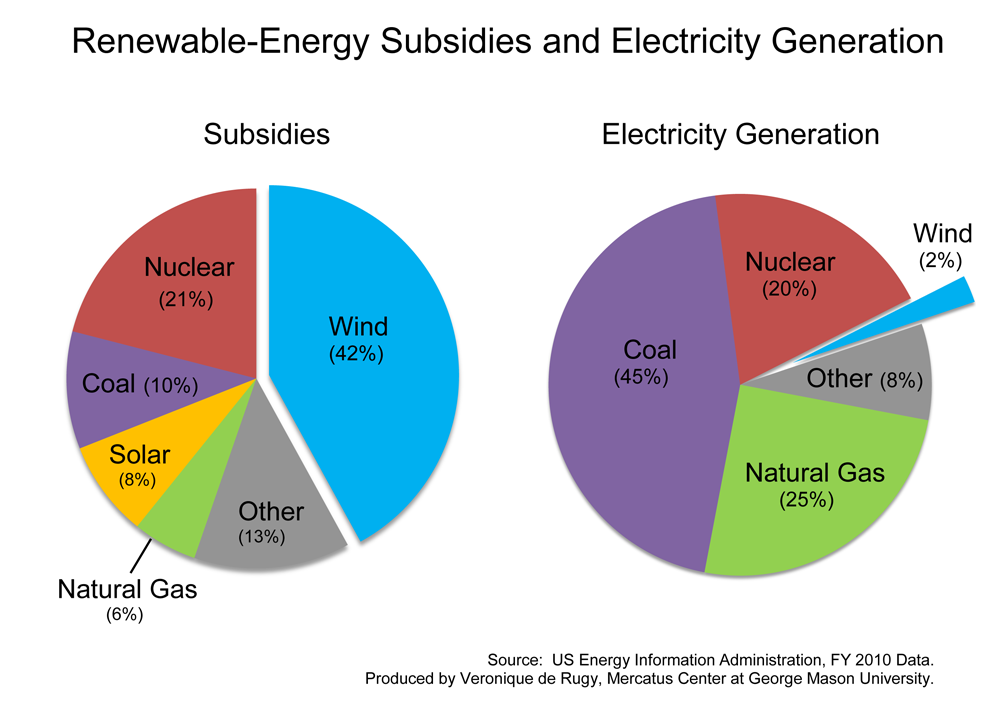Subsidies and Electricity Generation: which sources produce and which simply suck up tax dollars?
Which sources of electricity are responsible for generating a majority of the electricity in the United States and which receive a majority of the subsidies? The following charts illustrate the issue nicely:

Notably, in terms of generation, solar doesn’t even generate enough electricity to be broken out (although it does under subsidies). The best ratio in terms of most electricity generated relative to subsidies is natural gas. Nuclear, which many free market advocates strongly support, receives a relatively high rate of subsidies, but nowhere near the immense quantities of taxpayer dollars given to wind.
